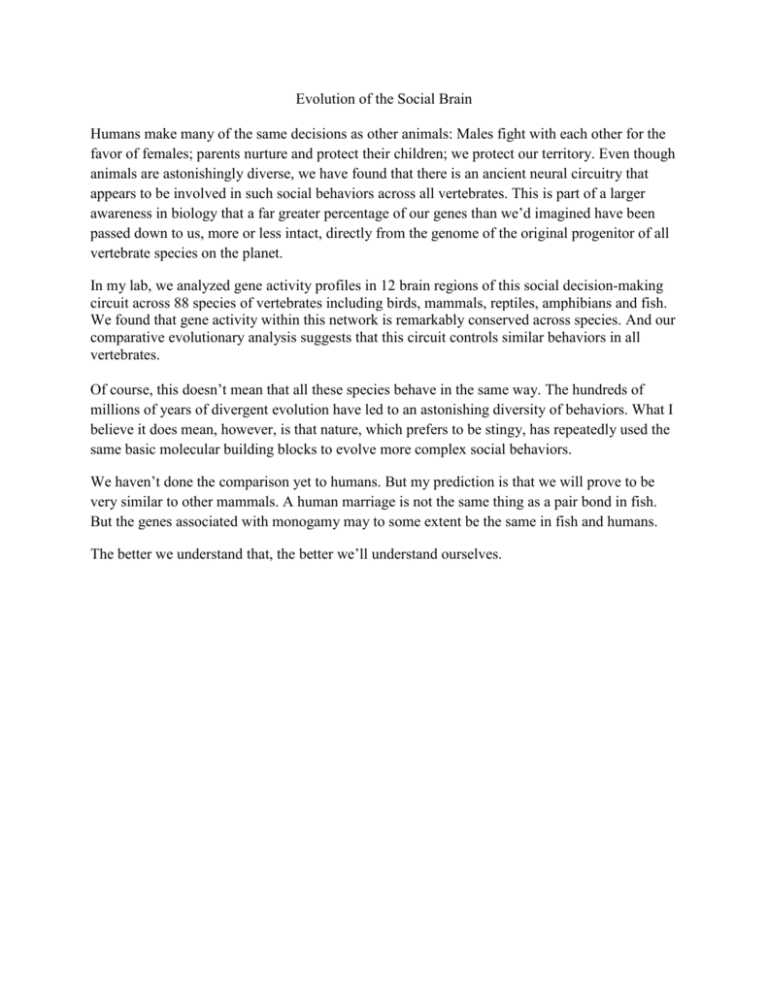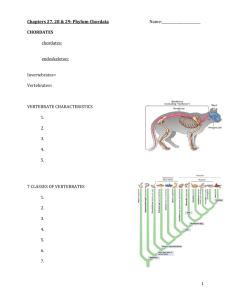Evolution of the Social Brain Humans make many of the same
advertisement

Evolution of the Social Brain Humans make many of the same decisions as other animals: Males fight with each other for the favor of females; parents nurture and protect their children; we protect our territory. Even though animals are astonishingly diverse, we have found that there is an ancient neural circuitry that appears to be involved in such social behaviors across all vertebrates. This is part of a larger awareness in biology that a far greater percentage of our genes than we’d imagined have been passed down to us, more or less intact, directly from the genome of the original progenitor of all vertebrate species on the planet. In my lab, we analyzed gene activity profiles in 12 brain regions of this social decision-making circuit across 88 species of vertebrates including birds, mammals, reptiles, amphibians and fish. We found that gene activity within this network is remarkably conserved across species. And our comparative evolutionary analysis suggests that this circuit controls similar behaviors in all vertebrates. Of course, this doesn’t mean that all these species behave in the same way. The hundreds of millions of years of divergent evolution have led to an astonishing diversity of behaviors. What I believe it does mean, however, is that nature, which prefers to be stingy, has repeatedly used the same basic molecular building blocks to evolve more complex social behaviors. We haven’t done the comparison yet to humans. But my prediction is that we will prove to be very similar to other mammals. A human marriage is not the same thing as a pair bond in fish. But the genes associated with monogamy may to some extent be the same in fish and humans. The better we understand that, the better we’ll understand ourselves.











